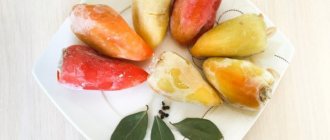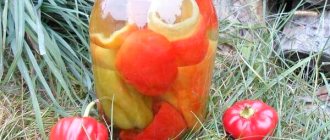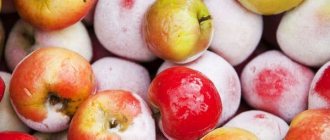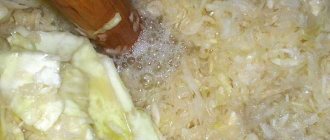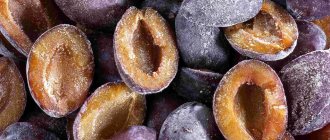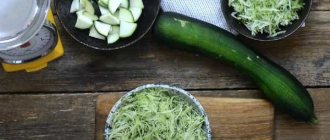Along with honey and raspberries, lemons are one of the most sought-after natural cold remedies. Tea, jam, pies - there are many recipes for using citrus. Many housewives rush to prepare healthy lemons by rolling them into jars. To enjoy delicious homemade preserves in winter, use step-by-step instructions with photos.
How to close a lemon with sugar
The method is considered the most popular.
In winter, these lemon slices are a great addition to tea or add flavor to baked goods or drinks. To make the preparation, you will need an equal amount of sugar and yellow vitamin fruits. Although some housewives advise using this proportion only if you are covering the slices. For a ground consistency, you need to double the amount of sugar. To cover sour fruits with slices:
- Select ripe, firm specimens. It is desirable that they be thin-skinned.
- For 30 min. place lemons in cold water.
- Scrub the peel thoroughly with a brush.
- Pour boiling water over the citrus fruits, dry with paper towels and set aside to dry completely.
- Cut into circles or slices about 0.3-0.5 cm thick, removing the grains.
You should first trim the tails on each fruit on both sides. Wash lemons thoroughly before cooking - Place a thin layer of sugar at the bottom of dry, sterile jars.
- Place 2-3 layers of lemons on top.
- Fill the container to the top.
- Close it tightly with the plastic lid.
- Place in the refrigerator for a couple of days.
- Turn the jars regularly to dissolve the sugar.
- When the volume of the contents decreases, add lemons again, sprinkling them with sugar (in the end, its layer should be the last).
- Roll up the jars. You can pre-sterilize them (for containers with a volume of 0.5 liters, 20 minutes is enough)
Selection and preparation of lemons
For harvesting, you need to select whole fruits with smooth skin, without visible damage. Specimens with dents and puncture marks will not be able to release much juice, will be stored less and will negatively affect the taste characteristics of the product.
Citrus fruits are prepared by cutting into slices or grinding in a blender. Many people peel off the peel during cooking, but this is only advisable in situations where it is old and hardened.
It is the peel that contains the bulk of the useful elements, so ripe fresh fruits are used for preparations.
Pickled lemons
6 large beautiful lemons, 3 tbsp. coarse salt, 1 tbsp. sugar, 0.5 tbsp. sweet paprika, 1 hot dry pepper, a little vegetable oil.
Cut thoroughly washed lemons into 0.5 cm slices.
Mix salt, sugar and pepper in a deep bowl. Roll the lemon on both sides in the mixture and place in dense rows in prepared sterilized jars. Place a pepper pod on top. Leave for several hours until the juice releases: it should completely cover the lemons. (If there is not enough juice, you can squeeze additional juice from the lemons and add to the jar).
Pour a little oil on top of the lemon juice - the oil layer is necessary so that the lemons do not come into contact with air. Cover with a nylon lid and leave for a week at room temperature (but not in direct sun). Then put it in the refrigerator. After 2 months, lemons can be served.
6 large beautiful lemons, 6 tbsp. salt, 6 pieces of cardamom, 4 bay leaves, 2 tbsp. black pepper, 1 cinnamon stick, vegetable oil.
Cut thoroughly washed lemons into 4 parts. Place them in a colander, sprinkle with salt and leave for 2 days at room temperature. Then transfer to a sterile jar, add spices, pour in sunflower oil. Cover with a nylon lid and place in the refrigerator.
After a month, the lemons are ready to eat.
I learned from my mother-in-law how to make tasty, healthy and very unusual jam. Try it - and you too will be pleasantly surprised!
Angelica Brutti, Moscow region.
How much and at what temperature can they be stored?
If lemons have to be transported for a long time, they are collected unripe.
Citrus fruits collected in the winter season have the longest shelf life, since they are picked when ripe. This affects the taste.
If the fruits have to be transported for a long time, they are collected unripe. During delivery, they acquire their characteristic color and smell.
Storage conditions without loss of taste:
- the storage location must be sufficiently ventilated;
- temperature range fluctuates between +7…+15 °C;
- indoor air humidity should not fall below 85%;
- Each specimen is in a personal mesh, which protects the fruit from mechanical damage.
Thick-skinned citrus fruits last longer than thin-skinned ones.
How to store at home at room temperature
To keep citrus fruits perfectly preserved, we recommend:
- do not keep them at home for more than 15 days: they lose their inherent taste;
- coat the peel with any vegetable oil and leave it in the cupboard - this will prevent it from withering;
- Remove fresh purchases from the plastic bag, ensuring air access and no condensation;
- pack each copy in baking parchment and then place it in a box with clean sand;
- create a vacuum in the storage container using a vacuum sealer.
How to store in the refrigerator
To preserve fruits in the refrigerator, it is advised:
- use a shelf specially designed for these needs;
- do not leave them near foods that will absorb the smell;
- use parchment paper: it will help extend the life of citrus fruits;
- use a bowl with water (it will prevent loss of skin tone), change the liquid every two days.
Read more ► How to store sea buckthorn?
Following these recommendations will preserve the freshness of citrus fruits for six months.
How to store lemons in a cellar or basement
It is recommended to store citrus fruits in a cool and dark place as follows:
- Place the fruits wrapped in parchment in a box, arranged with birch branches. Periodically, the citrus fruits are unwrapped, inspected and wrapped in fresh paper.
- Place the fruits coated with olive oil on racks so that they do not touch each other.
- Place the fruits in a copper pan and place the dishes on ice. Once every six months, wipe the lemons from moisture.
Lemon preparations for the winter - selected recipes
Fragrant mint and lemon jam. Recipe - how to make homemade mint jam.
kerescan – Apr 18th, 2015
Categories: Jams, Sweet preparations
Maybe someone will be surprised: how to make mint jam? Don’t be surprised, but you can make very tasty aromatic jam from mint. In addition, it is also tasty and healthy, and judging by the smell, it is simply magical.
A healthy recipe: lemons with sugar for the winter - or homemade fresh lemons for future use.
kerescan – Aug 2nd, 2015
Category: Jam
Lemons are distinguished by their usefulness, as they contain vitamin C - a powerful antioxidant - and are rich in mineral salts
It is important to have it on hand at any time of the year, but, unfortunately, this tropical fruit, being fresh, does not last long. With this simple recipe, you can quickly prepare fresh lemons at home for future use, which will preserve all its beneficial substances for a long time.
kerescan – Sep 6th, 2015
Category: Candied fruits
Candied lemon peel is included in the list of ingredients for the preparation of many confectionery products. Well, what would a Christmas cupcake or a sweet Easter cake be without beautiful candied fruits? They are also ideal for various baked goods with cottage cheese. And children love to nibble on tasty and healthy candied fruits instead of candy.
How to make lemon zest at home - a simple recipe for how to remove the zest.
kerescan – Aug 1st, 2015
Category: Little tricks
The beneficial properties and amazing aroma of lemon zest explain its popularity and wide use in cooking. But not every housewife knows how to peel a lemon correctly and easily. And preparing it at home is very simple. This recipe will discuss how to prepare the zest at home.
Original lemon jam - how to make delicious lemon jam for the winter - a simple recipe.
kerescan – Sep 6th, 2015
Category: Jam
Making lemon jam at home is not at all quick and a little troublesome. This delicacy is prepared in large quantities, probably where citrus fruits grow. And for residents of other countries, making jam from lemons is rather an opportunity to expand the range of unusual homemade preparations for the winter.
Recipe for making birch sap at home
The first option will be canned, for a citrus note you can add fruit such as orange. It is this combination that will give a delicate taste and aroma, as well as a beautiful slightly yellow color.
This combination of products will allow you not only to drink a very tasty drink, but will also help boost the immune system of the human body as a whole, and you will also feel a surge and charge of strength. Worth a try!
This recipe is factory-made, this is exactly how they used to make it and roll it up in large quantities and put it up for sale.
We will need:
- birch sap - 3 l
- citric acid - 0.5 tsp
- granulated sugar - 100 g
- orange - optional
Cooking method:
1. First of all, you need to sterilize the lids; to do this, boil them in boiling water for a couple of minutes. Place the jars in the oven for 5 minutes.
2. Wash the fruits well under running water and be sure to pour boiling water over them.
3. Cut the oranges into rings, wow, what beautiful orange ones. Don’t forget that you also need to pour boiling water over the knife and ladle. Remove the seeds.
4. Now at the bottom of a three-liter jar you should place three orange rings, half a teaspoon of citric acid and sugar. If you want and like the juice sweeter, then add sugar in proportions - 200 g, and citric acid - 1 tsp.
5. Place the pan with birch sap on the stove and bring to a boil, then turn on low heat and follow further instructions.
6. Ladle the drink into the jar. Be sure to place the jar on a towel or soft cloth.
7. Pour the liquid almost to the very edge, cover with a lid and roll up with a twist, then turn the jar upside down and make sure that no liquid comes out. Allow the jars to cool and then consume chilled. Bon appetit! Your preparations for winter are ready. You can add more stickers so you don’t forget.
Grated lemons with sugar
The recipe for grinding lemons with sugar in a meat grinder will also not cause you any difficulties.
Ingredients:
- lemon – 1 kg;
- sugar – 1 kg.
The algorithm of actions is as follows:
- Rinse the lemons thoroughly. Preferably with a brush, because the fruit could be coated with special wax to shine and extend shelf life.
- Cut the lemon into four parts. Remove all seeds.
- Put the lemon through a meat grinder.
- Add sugar to the resulting mass. Leave for about an hour, stirring occasionally.
- Pour into jars and refrigerate.
Grated lemon with sugar can be left for the winter. To do this, you need to pour the resulting mass into pre-sterilized jars, then roll them up and put them in a cool place.
How to extend shelf life
The following methods will help extend the shelf life:
- Place the fruits in boxes filled with sawdust. Such containers should be kept in the basement. To increase shelf life, each lemon is wrapped in paper.
- Place fruit in airtight containers. To do this, the fruits are placed tightly in sterile containers, a burning candle is placed in them and immediately rolled up. With the help of fire, oxygen can be burned. Such fruits can be kept fresh for a long period of time.
- Pour water over the fruits. They should be completely covered with liquid and placed in the refrigerator. The water is changed every day.
How to preserve lemons with sugar and coriander - AgroFlora.ru
Every housewife wants to preserve the harvest of lemons or add a twist to familiar dishes and surprise relatives with their culinary talent.
You can dry or salt the fruits, make jam, or prepare canned lemons and flavor everyday dishes with them. We will learn how citrus fruits are preserved in different ways: with sugar, spices and garlic, and in what dishes they are used as a flavorful additive.
Preserved lemons: recipe with coriander
To prepare lemon juice, you need the following components:
- Small lemons – 1.6 kg;
- Coarse salt – 120 g;
- Coriander beans - 0.8 g;
- Black peppercorns – 1 g;
- Lemon juice – 120 g;
- Warm boiled water – 0.6 l.
How to preserve lemons at home
Preserving lemons is a great way to get a vitamin-rich addition to sauces, vegetable salads and stews, cocktails, meat and other dishes. Fruits in this form are stored well both in the refrigerator and at room conditions.
Let's preserve lemons at home:
- We wash the lemons with warm water, removing the wax with a brush or sponge if necessary. Dry the fruits.
- Squeeze the juice from 1 lemon and shallowly cut the remaining fruits on 4 sides with a sharp knife.
- Divide the salt into equal parts according to the number of fruits and pour it into the cuts, moving from the middle to the edges.
- Place the lemons in sterile jars, add peppercorns and coriander, and add fresh lemon juice. Fill the contents of the jars with heated water.
- Cover the lemons with a small lid, put pressure on it, seal it tightly and put it in a dark place for a month.
If you decide to add preserved lemon to any dish, rinse it with water. You can use whole fruits, lemon slices or just the zest for cooking, which gives meat and vegetable dishes (cut into cubes) a simply fabulous aroma!
Preserved lemons with garlic
To preserve lemons with garlic, stock up on the following ingredients:
- Lemon – 6 pcs.;
- Sea salt – half a glass;
- Thyme – 16 sprigs;
- Garlic cloves - 3 pcs.
Canned lemons with garlicHow to prepare lemons for the winter
This recipe will appeal to those who love everything unusual in taste: lemons with garlic are the height of originality! To add piquant notes to various dishes, we prepare canned lemons according to the following recipe:
- Boil the thoroughly washed fruits over medium heat for a minute and cool.
- Cut the tops of the lemons crosswise, add thyme sprigs and 1 tsp. salt.
- Sprinkle a little salt on the bottom of a jar doused with boiling water. Add thyme sprigs and crushed garlic clove.
- Place the lemons and tamp them down, sprinkling them with salt, crushed garlic and thyme. We get a jar of lemons, filled to the top with lemon juice. If there is not enough juice, squeeze the juice from new lemons and add to the top.
We seal the jar with a lid scalded with boiling water and put it in a dark place for 30 days. Shake it occasionally so that the fruits are salted evenly.
How to preserve lemons with sugar
Required Components
- 6 medium-sized lemons, thinly zested
- 0.5 kg sugar
- 2 cloves
- cinnamon stick
How to preserve lemons with sugarHow to seal lemons in jars for the winter
How to preserve the beneficial qualities of lemon and protect yourself from vitamin deficiency? Let's preserve them with sugar, resulting in not only a healing, but also a surprisingly tasty delicacy. To prepare canned lemons, follow this recipe:
- Add a clove and half a cinnamon stick, pour 150 g of granulated sugar into each jar.
- Sprinkle the slices with 200 g of sugar, leave for half an hour and place in sterile jars. Pour the resulting juice there.
- Dry the lemons and cut them as desired, leaving or removing the seeds.
- Place the well-washed fruits in cold water for half an hour to remove the bitterness from the zest.
- We seal the containers with sterile lids and boil in a saucepan with water, covering the jars up to the hangers, placing a towel on the bottom, over medium heat for 15 minutes. The sugar will completely dissolve and the juice will cover the slices.
- We take out the jars, turn them over and wrap them up. After a day we put it in the refrigerator or cellar.
Sour lemon is added to any dishes and drinks, served as an appetizer with wines and other alcohol.
So, you have learned how to prepare canned lemons for the winter or for consumption at any time of the year. Preserve lemons in any convenient way and provide yourself with vitamins and a savory addition to various dishes!
Rules for storing citrus fruits
To store lemons for a long time, it is worth considering a number of features.
Temperature
The optimal temperature for storing lemons should be +6-8 degrees. Serious fluctuations in parameters are unacceptable. A decrease in temperature results in fruit freezing. This causes them to soften. An increase in indicators leads to rapid wilting and dryness of fruits.
Illumination
It is recommended to immediately remove fresh fruits to a dark place. They should not be exposed to sunlight.
Humidity
Humidity parameters should be 75-85%.
Neighborhood
Citrus fruits should not be placed next to fruits that have an intense aroma. Volatile aromatic substances easily dissolve in lemon essential oils, giving them an unpleasant aroma.
Features of preparing lemon with sugar for the winter
A popular option for preserving lemons in winter is to preserve the fruit in sugar. The fruits are soaked, cut into slices, and covered with sugar. After half an hour, the product is packaged in glass jars and placed in a deep saucepan with water. You need to heat the jars until the sugar is completely dissolved. Then the containers are rolled up with sterilized lids.
Required:
- lemons – 5-6 pcs.;
- sugar – 300 g per jar;
- cloves or cinnamon.
You can harvest citrus fruits whole, but make cuts on one side to separate the juice.
Specifics of choosing citrus fruits
Depending on the variety, lemon fruits can have different shapes, sizes, and smoothness of the peel.
Selection rules:
- Choose fruits with a uniform color, without depressions, signs of rotting, or black spots.
- When squeezed, the lemon peel should not be deformed.
- The smell of citrus should be noticeable through the peel.
- The shiny surface of the fruit indicates paraffin treatment.
- The presence of green spots on the peel is a sign of unripe fruit.
- The uneven surface of a citrus fruit is a sign of a thick peel.
Any defects in the shell indicate improper cultivation or storage. To make preserves, jams and drinks for the winter, it is better not to use soft fruits. If the purchased fruit is bitter, hot water in which it is immersed for a few seconds will help correct the situation.
Preparing the dishes
You need to prepare preserves, jams, and citrus drinks in an enamel container or stainless steel pan. Do not use aluminum, copper utensils or containers that show signs of chipping or damage. The acid contained in lemons will cause the metal to react and allow harmful substances to penetrate into the workpiece.
The finished product should be stored in glass containers, washed and sterilized in advance. The lids of the jars must also undergo heat treatment.
How to choose the right fruits for long-term storage
To ensure that the shelf life is as long as possible, you should choose only high-quality fruits. In this case, several criteria must be taken into account.
Appearance
High-quality fruits have a uniform color. They should not have dots, stains or other defects.
Peel
The skin of good fruits should be smooth. There should be no folds, depressions or loose areas.
Elasticity
The peel of the fruit should be quite elastic. To do this, it is recommended to lightly press on the surface of the citrus.
Ripeness
Ripe lemons are bright yellow in color. Unripe fruits are greenish-yellow in color.
Smell
High-quality citrus fruits have a very strong smell that can be felt even through the skin.
Thickness
Good fruits have thin skin. Such fruits contain the maximum amount of useful components.
Original lemon preparations for the winter
Lemons with sugar
Let's start with the most primitive and well-known recipe. This is not even a recipe, but some kind of children's entertainment.
Ingredients:
lemons, sugar.
Cooking method:
- Cut the lemon into slices, put it in a jar and sprinkle with sugar.
- After this, shake the jar vigorously, and when the juice appears inside, leave it for a day.
- The next day, drink the juice (it will be quite nice) and start eating lemons.
We doubt that anyone will like their sour taste (although there are also avid lovers of this sourness). These lemons are healthy, but not very tasty. Therefore, we suggest considering other more serious recipes for preparing lemons.
Salted lemons
And first, let's talk about salted lemons. No, you won't have to eat them - they will be the perfect seasoning. In the cuisine of African peoples, it is the peel of salted lemons that is very popular and replaces a large number of spices. But since it is impossible to buy salted lemons in our area, you need to make them yourself.
Currently, there are 2 known ways to prepare salted lemons. The first of them is based on the use of brine. In this case, the preparation time is several months.
The second option is used using vegetable oil. In this case, lemons can be used after 5 days. The main element here is the peel. The pulp and brine will be discarded (although some recipes can use the brine as a salad dressing).
Lemons with salt. Recipe No. 1
The simplest recipe for making salted lemons is one that uses only lemons and salt.
Cooking method:
- Cut the fruits and sprinkle with salt.
- You can sprinkle a little cloves, cinnamon or some other spices on top.
- After this, place the lemons in a container so that they do not fall and stand with the cuts facing up. Pour water so that it completely covers them.
- After 1 month, remove them from the brine, peel the pulp, remove the salt from it, and use it as a seasoning for cooking dishes, for example, national Moroccan cuisine.
Lemons with salt. Recipe No. 2
By using vegetable oil instead of water, the pickling time can be significantly reduced. The recipe itself is approximately the same as in the classic version. Only in this case, the lemons will be ready in 15 days.
Cooking method:
- Remove the lemons, remove the peel and remove the salt.
- You can use the peel for its intended purpose, but discard the pulp.
As for oil with salt and juice, they can be used as a dressing when preparing salads.
Pickled lemons
When it comes to preparing meat and fish dishes, many recipes cannot do without lemon juice. At the same time, instead of juice, you can use pickled lemons - the juice from them has an amazing aroma. In the classic version, lemons are marinated for about a month. As for the alternative option, here they will be ready the next day.
Ingredients:
lemons, garlic, paprika pieces, olive oil and salt.
Cooking method:
- To do this, cut the lemons into slices, put them in a jar, periodically sprinkling them with garlic and pieces of paprika.
- Afterwards, pour them with olive oil and add a little salt.
- Within a day you can use such lemons for their intended purpose.
Lemon marmalade
Be sure to try making marmalade from lemons! True, it will be completely different from the store-bought one and will not even be too sweet. But such marmalade will be an ideal snack, because it goes well with fish and meat. Moreover, it can be prepared for future use and rolled into jars.
In addition, you can even give lemon marmalade as a gift to one of your friends. A gift made with your own hands can become a warm memory of you. The only thing is to warn them that it should not be served with tea.
Here are some unusual options for preparing lemons. There are countries where they have been used for centuries, but they came to us only recently. Be sure to try at least one of the proposed recipes and discover new tastes and possibilities in cooking!
Simple ways to store cut lemons
Storing a cut lemon is much more difficult than storing a whole one. This is due to the influence of many factors not only on the skin, but also on the inside of the fruit. However, enterprising housewives have found several ways to increase the shelf life of lemons cut into small slices.
Lemons with sugar in a jar in the refrigerator
This simple and effective method allows you to preserve sliced lemons for up to 6 months. Having this opportunity, it is recommended to prepare citrus fruits for the whole winter.
Correct sequence of actions:
- The fruits are thoroughly washed, dried from moisture and cut into thin rings or half rings.
- Granulated sugar is poured into the bottom of a pre-prepared jar.
- Several layers of citrus are placed on top.
- Similarly, continue filling the glass container to its neck.
- The prepared products are left on the table until all the sugar has dissolved.
- Only after this the jar is closed with a lid and the lemons and sugar are placed in the refrigerator.
Storing lemons in salt
You can prepare lemons for the winter not only with sugar, but also with salt. The finished product will be fresh for at least 6 months and will retain all its beneficial substances. The only drawback of this method is the salty taste of the infused fruits. Because of this, they are added during the preparation of main courses or unusual desserts.
Procedure:
- The washed fruits are cut into pieces of arbitrary shape.
- A thin layer of salt is poured into the bottom of a clean jar.
- Citrus fruits are evenly placed on top.
- A bay leaf and a few black peppercorns are placed on them.
- Repeat the same steps until the container is filled.
- The workpiece is covered with a lid and placed in the refrigerator.
Frozen lemons
The longest storage of lemons is possible when using a freezer. In this case, the fruits can last for about a year without spoiling.
Citrus fruits are prepared as follows:
- The fruits are washed, dried and cut into thin slices.
- After this, they are placed in the freezer and kept there for 5 hours.
- The citrus fruits are then placed in containers or bags and returned to the freezer.
Storage on a saucer
If you need to preserve the cut fruit for just a few days, you can use an ordinary saucer. In addition, you will need a glass and a small amount of bulk ingredients.
Make the preparation like this:
- Place a little salt or sugar on a saucer.
- Place citrus on top (cut side down).
- Then the fruit is covered with a glass. If the lemon is too big, you can use a cup or jar.
- The saucer is sent into the cold, where the lemon can be stored for 5 to 15 days.
Crispy and elastic cucumbers
Ingredients:
- young cucumbers - a little more than a kilo
- rock salt - 20 g
- sugar - 20 g
- peppercorns
- garlic - 2-3 cloves
- 9% vinegar - 2 tablespoons (per 1 jar)
- small hot pepper
- Greens for pickling (horseradish, currants, dill umbrellas)
It is allowed to add more products such as onions or peppers.
Preparation:
We select cucumbers of the same size, place them in cold water, where we keep them for a couple of hours, constantly changing it. Thoroughly rinse the containers for twists and hold them over steam for 5 - 10 minutes. Place the lids in a small saucepan, pour water on top and place on the fire until it boils. Place the greens on the bottom, along with peppers, onions and garlic. Place the cucumbers. Place a pot of water on the stove and bring to a boil. Using a ladle or cup, carefully pour boiling water into the jars. Leave it like this for 10-15 minutes
Take the jar of cucumbers using an oven mitt and carefully pour the water back into the pan. It will take on a slightly greenish color.
Add spices to the same pan. Fill the jars with marinade to the brim, pour the specified amount of vinegar on top. Seal, turn upside down, cover, and leave until completely cool.
Lemon jelly
Ingredients:
- lemon – 1 pc.;
- sugar – 3 tbsp;
- gelatin – 1 tbsp;
- water (boiled) – 400 ml.
The cooking process is as follows:
- Wash the lemon thoroughly and cut into two parts.
- Using a grater, remove the zest. This must be done carefully so as not to touch the white shell, which can give the jelly an unpleasant bitterness.
- Using a juicer, extract lemon juice.
- Pour water into a saucepan and put on fire, bring to a boil.
- Add lemon zest and sugar. Boil for about 7 minutes.
- Add gelatin. Do not let it settle to the bottom, constantly stirring the liquid with a whisk. Boil.
- Remove from stove. Pour in lemon juice and stir until smooth.
- Pour into molds and refrigerate for about 3 hours.
What can you make from lemons at home?
Methods for preserving citrus fruits for the winter are varied. The fruits are preserved whole, crushed, sugar and spices are added, jam and drinks are made, and dried. Such preparations are not only consumed in their pure form, but also used as a dressing for meat, fish and sweets.
Jam with mint
For preparation you will need:
- lemons – 2 pcs.;
- sugar – 500 g;
- mint – 200 g;
- water.
Mint and yellow fruits are washed well, crushed and filled with water. Boil for 15 minutes, remove from heat and let sit for half a day. The resulting mass is filtered, sugar is added, boiled for another 5 minutes and poured into jars. The jam will be liquid; if necessary, you can add a thickener or starch. You can make it for future use; it keeps well all winter.
Making jam for the winter is not difficult. Lemons are crushed through a meat grinder and covered with sugar. Insist for half an hour and send to cook. After 10 minutes, remove from heat, cool and bring to a puree consistency. The resulting mass is boiled again and poured into jars.
Candied lemon peels
- lemons – 1 kg;
- sugar – 500 g;
- water – 5 l.
To prepare candied fruits, only the zest is used. It is crushed and poured for 2 days to remove bitterness. The soaked peel is boiled in boiling water for 3-4 minutes. The procedure is repeated three times.
The boiled peels are poured into a syrup made from water and sugar and simmered until the liquid has completely evaporated.
This product should be stored in a cool, dry place.
Lemon zest
There are several ways to preserve lemon zest for the winter.
- Freezing - cut off the yellow part of the peel, chop it and put it in the freezer.
- With sugar – the peel is crushed and ground with granulated sugar. Store in the refrigerator in a tightly closed container. Used for making desserts and baking.
- Drying - the peel is cut into thin strips and baked in the oven. Used in preparing drinks.
- In powder form, the dry zest is ground into dust. Used as a seasoning for various dishes.
Ginger with lemon and honey
- lemons – 1-2 pcs.;
- ginger root – 200 g;
- honey – 500 g.
Fruits and roots are washed well, cut into pieces and sent to a blender to create a puree. Mix with honey. If it is dense in consistency, melt it in a water bath. The resulting mixture is packaged in small jars. The product contains a lot of vitamins and helps cope with colds.
- lemons – 4 pcs.;
- sugar – 0.5 kg;
- lemon juice – 0.5 l;
- water.
Citrus fruits are crushed and pitted. Pour in 3 glasses of drinking water and cook until the mass is reduced by half. Pour sugar into the prepared product and boil for half an hour. Check the condition of the syrup and fruit zest. Pour the finished mixture into jars and roll up.
Additional ways to preserve so they don’t spoil
There are other ways to store lemons, each of which is considered very effective.
Drying
To extend the shelf life of cut fruit, you can dry it. To do this, the fruit is cut into small pieces and laid out on a towel. It should be dried for 3-5 days, constantly turning the fruits over. This can also be done in the dryer or oven.
An effective drying method is to use a glass container or paper bags. Such fruits are stored for 6-9 months.
Freezing
To freeze fruits, they must be washed, dried and cut. Then place on a tray and freeze. After 4-6 hours, transfer the slices to bags or trays and put them back in the freezer. Frozen lemons can be stored for up to 1 year.
Interesting recipes
There are also quite interesting options for preserving the freshness of lemons. To do this, you can do the following with the fruits:
- coat with wax;
- sprinkle with sand;
- immerse in water.
RECIPES: Preserved lemons
Canned lemons are a good continuation of your acquaintance with original preparations that should certainly be in every kitchen. A jar of such lemons is perfectly stored even outside the refrigerator, and if necessary, they can be added to stews, sauces, butter, cocktails, salads and side dishes.
The beauty of recipes of this kind is that almost any additive can accompany the main ingredient. We went with the bare minimum of thyme sprigs and garlic cloves, but you can go further by adding hot pepper flakes, bay leaves, black peppercorns, mustard, cloves or coriander seeds.
Before you start cooking, rinse the citrus fruits thoroughly, put them in boiling water and boil for no more than a minute so that the peel softens and the lemon gives out more juice.
Cut each lemon crosswise, making sure the depth of the cut does not exceed half the size of the fruit. Place a few sprigs of thyme and a heaped teaspoon of salt into the resulting hole.
Do a similar procedure with all citrus fruits, and then proceed to the dishes. Due to the high acidity and salinity of the solution in which citrus fruits will be preserved, the likelihood that the product will deteriorate due to contamination with fungi or bacteria is minimal, but it is better to play it safe by thoroughly rinsing the dishes and pouring boiling water over them.
Prepare the garlic cloves by flattening them with the flat side of a knife into the shell.
Now put a little salt in the bottom of the jar, put in the thyme and one of the crushed garlic cloves, and then tamp down the lemon. Add a little more salt, again garlic, thyme, another lemon and tamp again. When all the lemons are in the jar, make sure there is enough juice to completely cover the lemons. If necessary, compact the fruits more firmly or add a little more natural lemon juice. Screw on the jars with scalded lids and shake the contents.
Now you just have to wait about a month, shaking the jar from time to time so that the salt crystals dissolve in the juice and the marinade itself is distributed among the lemons. In this form, the workpiece can be stored for up to a year. Before use, lemons are rinsed with cold water and then used together with the zest.
The healthiest unsweetened fruits
All fruits that are low in sugar are already good for the body. But it should be borne in mind that only if they are used in moderation. What fruits are unsweetened and what are their benefits? For example, lemon is the record holder for the content of vitamin C, which is so necessary for the body’s immune system, especially during periods of increasing numbers of viral diseases. But there are also contraindications to its use: stomach ulcers, gastritis, hypertension.
In terms of sugar content, avocado deservedly tops the list of unsweetened fruits. But you should not abuse it, since the fruits are very high in calories, due to the large amount of vegetable fat they contain.
Thus, absolutely all unsweetened fruits are healthy. They are recommended to be eaten before or after meals, and are better used as a snack. A single dose of fruit is 100-150 grams or 2-3 fruits.
RECIPES: Canned lemons – Lifehacker
The beauty of recipes of this kind is that almost any additive can accompany the main ingredient. We went with the bare minimum of thyme sprigs and garlic cloves, but you can go further by adding hot pepper flakes, bay leaves, black peppercorns, mustard, cloves or coriander seeds.
Before you start cooking, rinse the citrus fruits thoroughly, put them in boiling water and boil for no more than a minute so that the peel softens and the lemon gives out more juice.
Cut each lemon crosswise, making sure the depth of the cut does not exceed half the size of the fruit. Place a few sprigs of thyme and a heaped teaspoon of salt into the resulting hole.
Do a similar procedure with all citrus fruits, and then proceed to the dishes. Due to the high acidity and salinity of the solution in which citrus fruits will be preserved, the likelihood that the product will deteriorate due to contamination with fungi or bacteria is minimal, but it is better to play it safe by thoroughly rinsing the dishes and pouring boiling water over them.
Prepare the garlic cloves by flattening them with the flat side of a knife into the shell.
Now put a little salt in the bottom of the jar, put in the thyme and one of the crushed garlic cloves, and then tamp down the lemon. Add a little more salt, again garlic, thyme, another lemon and tamp again. When all the lemons are in the jar, make sure there is enough juice to completely cover the lemons. If necessary, compact the fruits more firmly or add a little more natural lemon juice. Screw on the jars with scalded lids and shake the contents.
Now you just have to wait about a month, shaking the jar from time to time so that the salt crystals dissolve in the juice and the marinade itself is distributed among the lemons. In this form, the workpiece can be stored for up to a year. Before use, lemons are rinsed with cold water and then used together with the zest.
Preparation
- Place the lemons in boiling water and cook over medium heat for no more than a minute. Cool the fruits.
- Cut the top of each lemon crosswise, not reaching the middle of the citrus. Place a sprig of thyme and a teaspoon of sea salt into the resulting cut.
- Pour a little salt into the bottom of a scalded jar, add thyme and a crushed garlic clove. Tamp the lemons into a jar, sprinkling each citrus with salt, adding thyme and garlic. As a result, the jar should be filled to the top with lemon juice.
- Seal the jars with scalded lids and let the lemons cook for a month. Shake the contents of the container from time to time.
